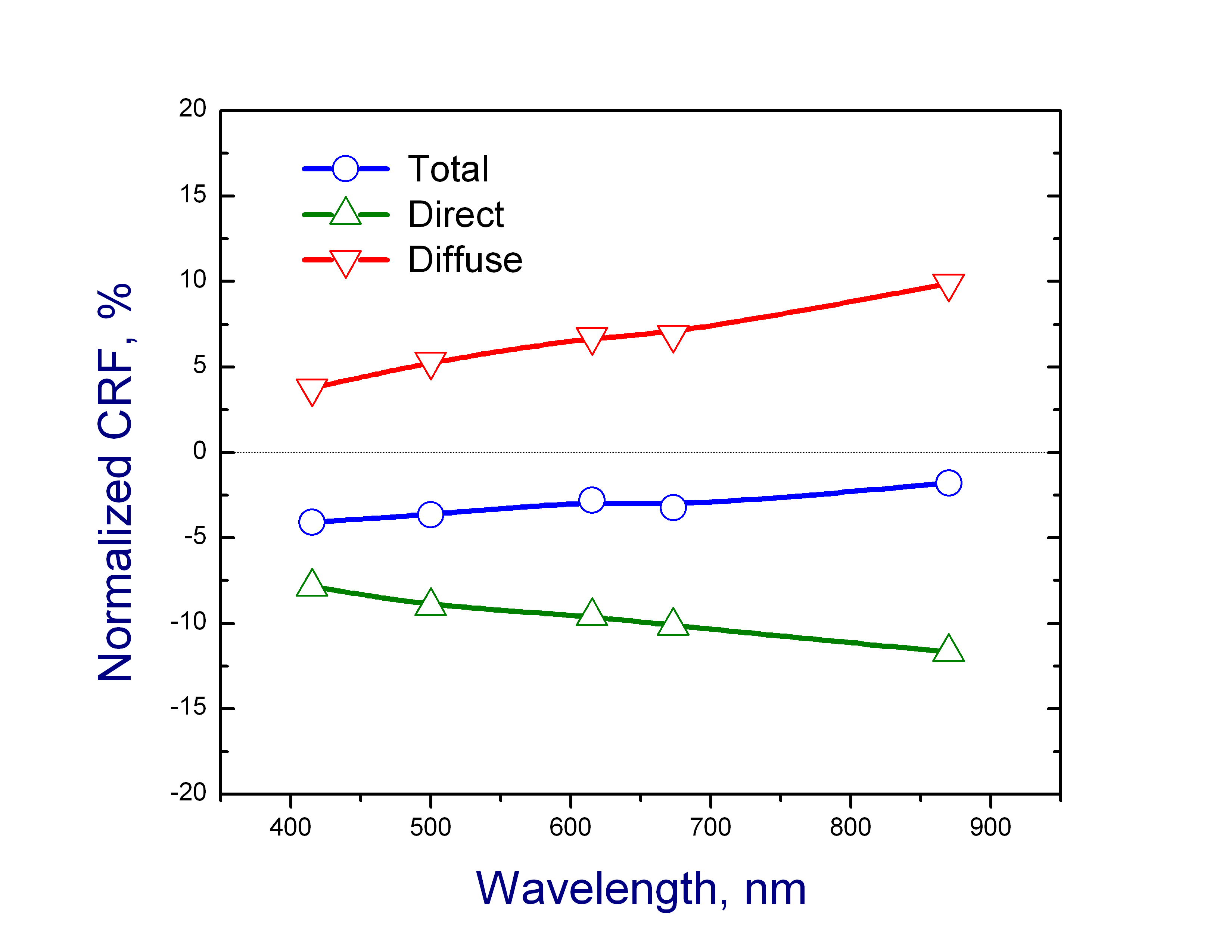Cumuli Impact on Solar Radiation at Surface: Spectral Changes
Submitter:
Kassianov, Evgueni — Pacific Northwest National Laboratory
Area of research:
Aerosol Properties
Journal Reference:
Science
Typically, under cloudy conditions, radiative transfer parameterizations in climate models have been evaluated by calculating the total cloud impact on the amount of solar energy reaching the surface. However, such calculations are quite limited for understanding the shortcomings of the parameterizations, because these evaluations should apply spectrally resolved values of radiative properties, rather than “broadband” values. Using broadband values alone could mask parameterization errors and therefore render them undetectable. This is particularly important for solar (visible) wavelengths where the scattering of sunlight is strongly influenced by atmospheric aerosol.
Impact
We introduce a framework for estimating the spectral radiative properties. The framework combines spectrally resolved all-sky solar fluxes measured by ground-based multifilter rotating shadowband radiometers (MFRSRs) with high temporal resolution and the corresponding clear-sky fluxes estimated by a new physically based approach. This approach begins with the MFRSR-based retrieval of aerosol optical properties for clear-sky periods using observed spectrally resolved surface fluxes. It then temporally interpolates retrieved clear-sky aerosol properties to “temporally nearby” cloudy intervals and uses the obtained aerosol properties as input to a radiative transfer model to calculate what the fluxes would be if no clouds were present. This permits a “spectral” evaluation of cloud impact on the radiation budget at surface, the so-called normalized cloud radiative forcing. We applied this framework to 13 summertime days with single‐layer continental cumuli observed at the U.S. Department of Energy Atmospheric Radiation Measurement Climate Research Facility at the Southern Great Plains (SGP) site. We calculated the normalized cloud radiative forcing and its diffuse and direct components.
Summary
Our calculations reveal that magnitude and sign of the cloud impact on the amount of scattered solar energy reaching the surface can change substantially with wavelength—a conclusion that cannot be inferred using broadband fluxes. The observed spectral dependences for averaged radiative properties (Figure 1) are a powerful diagnostic for evaluating radiative transfer parameterizations in the current and future large‐scale models of the atmosphere, including climate models. This application would be particularly beneficial for studies aimed at describing the aerosol‐cloud-radiation interaction, mainly due to the large values of aerosol loading observed in the visible spectral range.


